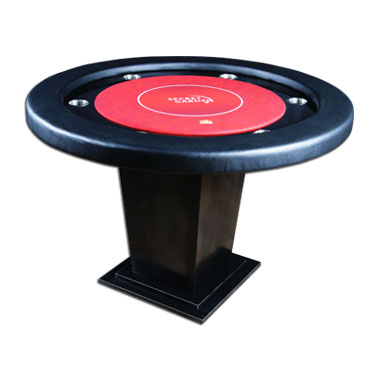In addition, they may also be used to show transactions that have been recorded in a general journal or some other type of specialized book of accounts. Recording a transaction in the books of accounts is known as making an entry. When a transaction is recorded in 10 steps to creating a nonprofit budget the journal, it is known as a journal entry. This is why the general ledger is also called the original book of entries, chronological book, or daybook. In the journal, two aspects of every transaction are recorded, following the double-entry system of accounting.
Accounting Journal Entries: Definition, How-to, and Examples
These generally contain the same types of information as a general journal does. However, they may not necessarily include all of the same kinds of information. General ledgers are often organized into smaller groups or “sub ledgers.” These are dedicated to specific types of income and expenditures.
Resources for Your Growing Business
- In certain instances (see below) an entry may need posting in both the subsidiary ledger and the general ledger and therefore a reference needs to included for both ledgers.
- The general journal serves several purposes in the field of accounting, all of which contribute to accurate financial recording and reporting.
- In this article, we will discuss what a general journal is and show some general journal entries examples.
- There may be multiple debit or credit entries, but the sum of the debits must be equal to the sum of the credits.
- At least one line should be left blank before the next journal entry, and entries should not be split over more than one page.
Hence, the PR column is used to state what page the information was copied to when the financial transaction was recorded on the journal ledger; which has information about separate accounts. That is, the page number of the ledger account to which the entry belongs is written in the posting reference column. For instance, if the cash account is on page number 99 in the ledger, the number 99 would be written in the posting reference column where the cash account appears in the general journal. These examples demonstrate how general journal entries are used to record various types of transactions in an organized and consistent manner. By fulfilling these purposes, the general journal plays a vital role in the smooth operation and financial management of businesses. Accounting journals are often called the book of first entry because this is where journal entries are made.
What is a Journal Entry?
There are four specialty journals, which are so named because specific types of routine transactions are recorded in them. These journals are the sales journal, cash receipts journal, purchases journal, and cash disbursements journal. There could be more specialty journals, but the four accounting areas represented by these journals contain the bulk of all accounting transactions, so there is usually no need for additional journals. Instead, by default, all remaining transactions are recorded in the general journal.
Step 1 of 3
This is confusing because our society is conditioned to think of bank accounts with debits as funds flowing out and credits as funds flowing in. There are more complex accounting journal entries than the general journal entry. It is important that a business continues to maintain their general journal and make accurate entries regularly so that all costs may be realized and so that all funds may be allocated as needed. When a general journal is successfully created and correctly formatted, accountants can easily track spending and identify any discrepancies that may exist. There may be multiple debit or credit entries, but the sum of the debits must be equal to the sum of the credits.
These advances in technology make it easier and less tedious to record transactions, and you don’t need to maintain each book of accounts separately. The person entering data in any module of your company’s accounting or bookkeeping software may not even be aware of these repositories. In many of these software applications, the data entry person need only click a drop-down menu to enter a transaction in a ledger or journal. In order to do this, a bookkeeper makes journal entries in the general journal recording changes in the corresponding accounts for a given transaction. For example, if a business purchased a new company vehicle for cash, the bookkeeper would record a journal entry that debits the vehicle account and credits the cash account.
General Journal Used to Update the Subsidiary Ledgers
Now that we know what is in the GL, let’s take a look at how it is formatted. Manual journal entries were used before modern, computerized accounting systems were invented. The entries above would be manually written in a journal throughout the year as business transactions occurred. These entries would then be totaled at the end of the period and transferred to the ledger. Today, accounting systems do this automatically with computer systems. Obviously, if you don’t know a transaction occurred, you can’t record one.
Remember that accounting skills require mastery of concepts and practice. There is an increase in an asset account (Furniture and Fixtures) in exchange for a decrease in another asset (Cash). Other names used for general journal are “journal book” and “book of original entry”. Let’s look at a payment of $1,000 with $800 going towards the loan balance and $200 being interest expense. You’ll learn what a general journal is for, how to complete an entry in a general journal, and more.
That way, you can start fresh in the new year, without any income or expenses carrying over. If you’re totally new to double-entry accounting and you don’t know the difference between debits and credits, you can pause here and check out our visual guide to debits and credits. It’ll teach you everything you need to know before continuing with this article. If financial statements are not put together in the correct order, then the information that they contain would be incorrect. Ensuring that you record dates properly will help keep your journal organized and accurate. Other journals like the sales journal and cash disbursements journal are also used the help management organize and analyze accounting information.
In contrast, the general ledger consolidates and summarizes the transaction details from the general journal, providing an overview of the balances for each account. It acts as a master financial record and aids in the preparation of financial statements. Both the general journal and the general ledger play important roles in the accounting process, complementing each other to ensure accurate financial recording and reporting. A bookkeeper or accountant would usually maintain the general journal. A general journal entry is a record of financial transactions in order by date. Though not a requirement, it is widespread practice to enter the debits first, followed by the credits and then the narration.
Your information is kept secure and not shared unless you specify. Our writing and editorial staff are a team of experts holding advanced financial designations and have written for most major financial media publications. Our work has been directly cited by organizations including Entrepreneur, Business Insider, Investopedia, Forbes, CNBC, and many others. At Finance Strategists, we partner with financial experts to ensure the accuracy of our financial content.
As you can see, each journal entry is recorded with the date and a short description of the transaction. Also, the debits of each transaction are listed before the credits in each transaction. As Blur Guitar, Inc. buys inventory and makes sales https://www.simple-accounting.org/ throughout the year, it records all of the transactions as journal entries in the general journal. At the end of the year or the end of a reporting period, these transactions are taken from the general journal and posted to individual ledgers.














